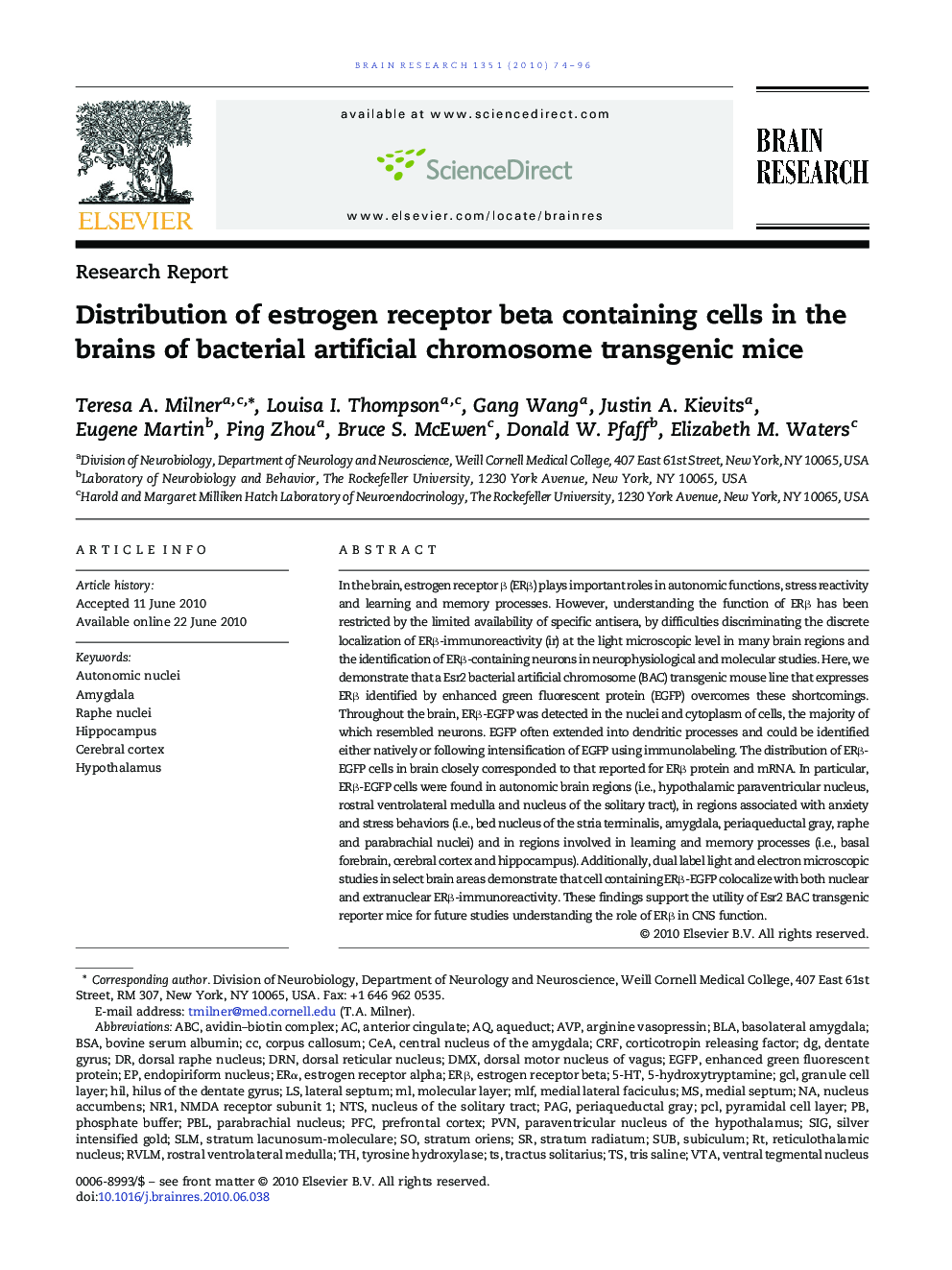| Article ID | Journal | Published Year | Pages | File Type |
|---|---|---|---|---|
| 4326631 | Brain Research | 2010 | 23 Pages |
In the brain, estrogen receptor β (ERβ) plays important roles in autonomic functions, stress reactivity and learning and memory processes. However, understanding the function of ERβ has been restricted by the limited availability of specific antisera, by difficulties discriminating the discrete localization of ERβ-immunoreactivity (ir) at the light microscopic level in many brain regions and the identification of ERβ-containing neurons in neurophysiological and molecular studies. Here, we demonstrate that a Esr2 bacterial artificial chromosome (BAC) transgenic mouse line that expresses ERβ identified by enhanced green fluorescent protein (EGFP) overcomes these shortcomings. Throughout the brain, ERβ-EGFP was detected in the nuclei and cytoplasm of cells, the majority of which resembled neurons. EGFP often extended into dendritic processes and could be identified either natively or following intensification of EGFP using immunolabeling. The distribution of ERβ-EGFP cells in brain closely corresponded to that reported for ERβ protein and mRNA. In particular, ERβ-EGFP cells were found in autonomic brain regions (i.e., hypothalamic paraventricular nucleus, rostral ventrolateral medulla and nucleus of the solitary tract), in regions associated with anxiety and stress behaviors (i.e., bed nucleus of the stria terminalis, amygdala, periaqueductal gray, raphe and parabrachial nuclei) and in regions involved in learning and memory processes (i.e., basal forebrain, cerebral cortex and hippocampus). Additionally, dual label light and electron microscopic studies in select brain areas demonstrate that cell containing ERβ-EGFP colocalize with both nuclear and extranuclear ERβ-immunoreactivity. These findings support the utility of Esr2 BAC transgenic reporter mice for future studies understanding the role of ERβ in CNS function.
